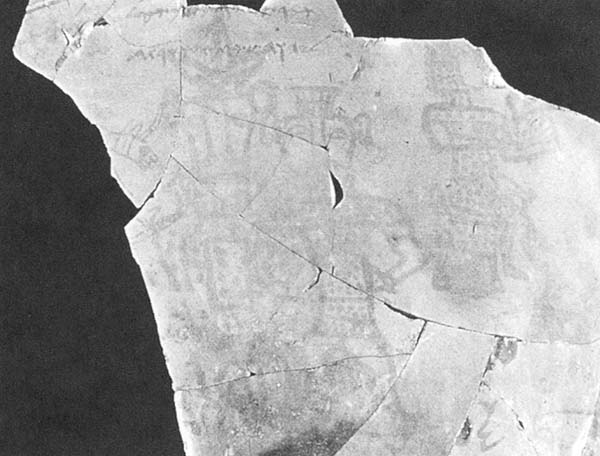Image Details

Avraham Hai
“I have blessed you by Yahweh of Samaria and his Asherah,” declares the inscription at the top of this pottery fragment from Kuntillet Ajrud. The identity of the three figures below the inscription has been the subject of heated debate among scholars. Some take the figure at left to be a representation of Yahweh, with the goddess Asherah depicted either at center or at right. These scholars argue that Asherah was Yahweh’s consort. Others see both the figure at left and at center to be the Egyptian god Bes in his typical arms akimbo pose, topped by a feathered headdress; the figure at right, in this view, is merely a lyre player. Kyle McCarter notes that the appellation “Yahweh of Samaria” was used by those living in the kingdom of Israel after it had split from Judah in the late tenth century B.C.E. In both states, McCarter emphasizes, the powerful memory of the earlier Yahwistic religion, with its roots to the south and to the east of the two kingdoms, lived on. It was this powerful faith, perhaps more than anything else, that lay at the heart of Israelite origins.
